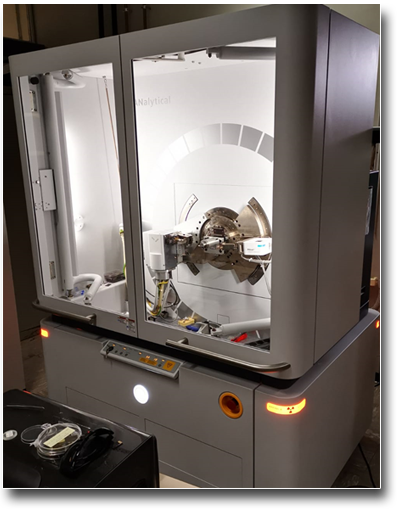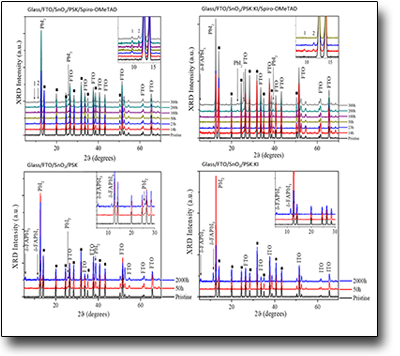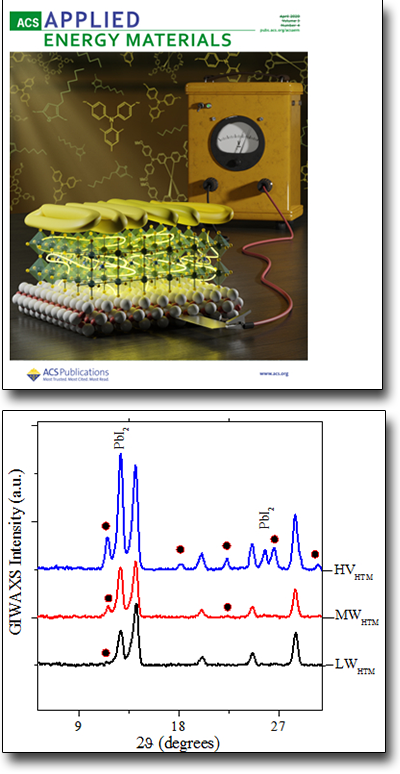
Panalytical Empyrean diffractrometer with accessories
Barbara Paci -
Laboratory : X-ray Spectroscopy Laboratory
In these particular conditions, diffracted rays will be generated from the series of planes of the (n) phases of the system investigated according to the geometric conditions dictated by Bragg's law and imposed by the instrumental conditions (wavelength used). The resulting diffraction spectrum produces a series of reflections that are indicative of both the positions and the intensity of the effects of the diffraction, useful not only for a rapid identification of the composition of the material, but also for a complete interpretation of its structure. New and fundamental impulses also come from the application of this technique to the study and characterization of materials outside their stability conditions such as the studies of the transformations of the crystalline phases in temperature or in controlled environments.
TECHNICAL SPECIFICATIONS
- Fine focus Cu- anode X-ray Tube (punctual and linear focus).
- Incident optical pathway: divergent slits and parallel plate collimator for an in plane collimated source.
- Water cooled 3.5KW generator.
- PIXCEL 3D detector, patented in collaboration with CERN, able to work in 0D-1D-2D mode. Software implementation is possible to gain 3D-tomography. By now this detector has the highest resolution in the world among commercial products (small pixels, less spread, higher counting rate) and allows for a compact instrumental geometry and consequently a wider angular range to be explored. ;
- Flat sample holder e Eulerian cradle for thin film movimentation;
- Hot-cold Linkam cell (-196 °C to 600 °C) working both in air and controlled atmosphere.
AVAILABLE TECHNIQUES
-
Bragg Brentano, Omega-2teta and Teta-2Teta X-ray diffraction of thin films, Rocking curve analysis, Reflectometry, In-plane diffraction (WAXS), grazing incidence x-ray scattering (GWAXS) and small angle x-ray scattering (SAXS)
-
It is possible to equippe the apparatus with hot-cold cell and work both in air and in controlled atmosphere.
1) Incident optical path can be set as a divergent source
2) a parallel collimated incident beam.
SAMPLES
-
Thin films/multilayers: max in plane dimensions 15cm*15cm for flat sample holder; 3cm*3cm for Eulerian Cradle.
-
Powders.
USE FOR
- Apparatus for structural quantitative studies on thin films but also for qualitative analysis of powders.
On thin films the traditional diffraction allows the identification of the phases, determination of crystallinity, structure and refinements, Rocking curve analysis for the study of textures and epitaxies. In situ analysis is also possible in non-environmental conditions.
Phase transition studies can also be performed as a function of temperature.
By varying the optical pathways, in plane structural investigations can be performed , GWAXS and SAXS for the determination of the rotation radii of nanoparticles and materials investigationa low coherence.
Selecting the parallel plane collimator, XRR measurements can be performed to determine electronic densities and morphological parameters such as thicknesses, surface roughness / interface of thin film materials.
CASE STUDIES
Easy strategy to enhance thermal stability of planar PSCs by perovskite defect passivation and low-temperature carbon-based electrode.
Organic-inorganic lead halide perovskite recently emerged as an efficient absorber material for solution process photovoltaic technology with certified efficiency exceeding 25%. However, the long-term stability of LT planar PSC under heat and moisture stress conditions has not been carefully assessed. However, the long-term stability of LT planar PSC under heat and moisture stress conditions has not been carefully assessed. Here, a detailed study on thermal and moisture stability of large area (1 cm2) LT planar PSCs is presented. In particular, the key role on thermal stability of potassium iodide (KI) insertion in the perovskite composition is demonstrated. Applying XRD is found that defect passivation of triple-cation perovskite by KI doping inhibits the halide migration induced from thermal stress at 85°C and delays the formation of degradation sub-products. The combination of carbon-based HTL free architecture and KI-doped perovskite permits to increase the T80 from 40h to 414h in unsealed devices.
See: E. Calabrò, F. Matteocci, B. Paci et al.” ACS Applied Materials & Interfaces, doi.org/10.1021/acsami.0c05878


Analysis of The Efficiency Losses in Hybrid Perovskite/PTAA Solar Cells with Different Molecular Weight: Morphology vs Kinetics
The PTAA polymer is often used as hole transport material (HTM) for high efficiency perovskite solar cells (PSCs). Yet, there are great differences within the solar cell efficiencies reported. Herein, we show that when increasing PTAA molecular weight (MW) from 10 to 115 kDa, the power conversion efficiency also increases. We analyze how the differences in MW influences the interfacial carrier losses in the PSCs under operando conditions by using advanced photo-induced spectroscopic techniques. Moreover, we compare kinetics and structural/morphological effects by studying the different PTAA MW films GIWAX analysis. Our results show that, the observed differences within the reported PSCs efficiencies, are due to the differences in carrier recombination kinetics, which are influenced by the differences in the polymer molecular weight.
See: N. Yaghoobi Nia, M. Méndez, B. Paci et al, ACS Applied Energy Materials
https://dx.doi.org/10.1021/acsaem.0c00956

 English (UK)
English (UK)  Italiano (Italia)
Italiano (Italia)